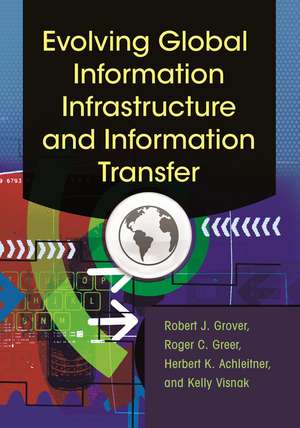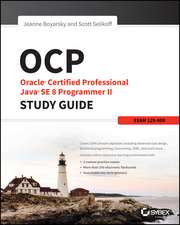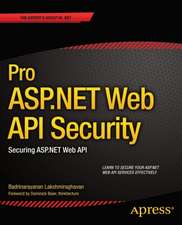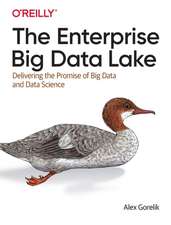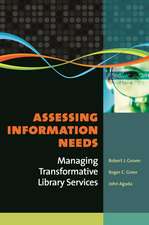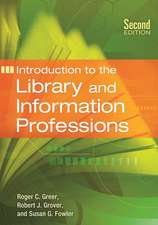Evolving Global Information Infrastructure and Information Transfer
Autor Robert J. Grover Professor Emeritus, Roger C. Greer, Herbert K. Achleitner, Kelly Visnaken Limba Engleză Paperback – 18 mar 2015 – vârsta până la 17 ani
Preț: 407.11 lei
Preț vechi: 561.53 lei
-27% Nou
Puncte Express: 611
Preț estimativ în valută:
77.93€ • 84.67$ • 65.50£
77.93€ • 84.67$ • 65.50£
Carte tipărită la comandă
Livrare economică 21 aprilie-05 mai
Preluare comenzi: 021 569.72.76
Specificații
ISBN-13: 9781610699570
ISBN-10: 1610699572
Pagini: 164
Dimensiuni: 178 x 254 x 23 mm
Greutate: 0.5 kg
Editura: Bloomsbury Publishing
Colecția Libraries Unlimited
Locul publicării:New York, United States
ISBN-10: 1610699572
Pagini: 164
Dimensiuni: 178 x 254 x 23 mm
Greutate: 0.5 kg
Editura: Bloomsbury Publishing
Colecția Libraries Unlimited
Locul publicării:New York, United States
Caracteristici
Explores future trends in the information infrastructure and examines the implications for library and information professionals and for their education
Notă biografică
Robert J. Grover, MLS, PhD, is retired associate vice president for academic affairs and dean of graduate studies at Emporia State University, where he held the position of dean and professor of the School of Library and Information Management.The late Roger C. Greer, PhD, MLS, was a creative thinker in the public and academic library professions for more than 50 years. He was dean emeritus of the School of Library and Information Management, University of Southern California; former dean at Syracuse University; and professor emeritus at Emporia State University.Herbert K. Achleitner, MALS, PhD, is professor emeritus of the School of Library and Information Management, Emporia State University.Kelly Visnak, PhD, is scholarly communication librarian at University of Wyoming, where she provides instruction, consultation, and policy support for issues related to fair use, copyright retention, open access, data management plans, and the library's digital scholarship repository.
Cuprins
ContentsPrefaceChapter 1: Introduction to the BookChapter 2: Contemporary SocietyChapter 3: How Paradigms Influence Society in the Information AgeChapter 4: The Information InfrastructureChapter 5: How the Information Infrastructure Has Changed in the Digital AgeChapter 6: Diffusion of Information and Knowledge-How Information Becomes MeaningfulChapter 7: Putting Knowledge to UseChapter 8: Navigating the Information InfrastructureChapter 9: The Library and Information Professions in the Information InfrastructureChapter 10: Emerging TrendsIndex
Recenzii
This book is specifically appropriate for new librarians and library students, but it could also be a useful rumination for practiced librarians and others in academia and information professions. Librarians who have experienced firsthand the transformation of information from analog to digital will not find any surprises here, but rather a guided thought exercise through the specifics of how information has changed and how the role of the information professional has changed through and with it. This broadly applicable volume reveals the detail of the profession as it is today and would be a good addition to professional libraries as a reference for the future.
